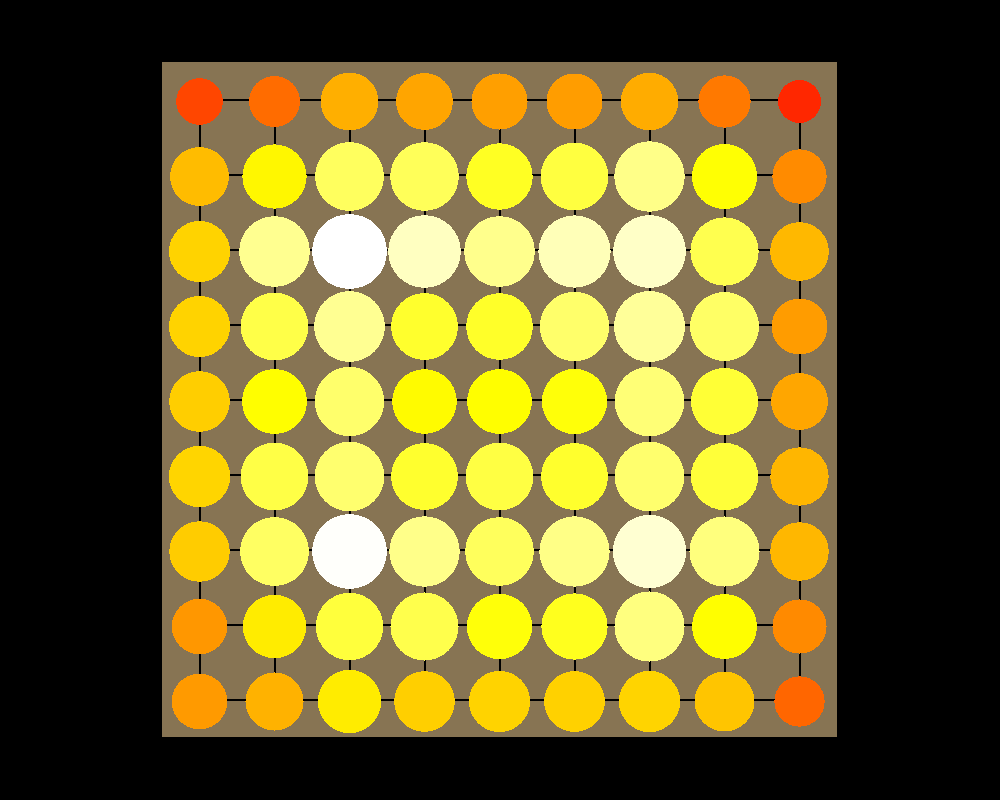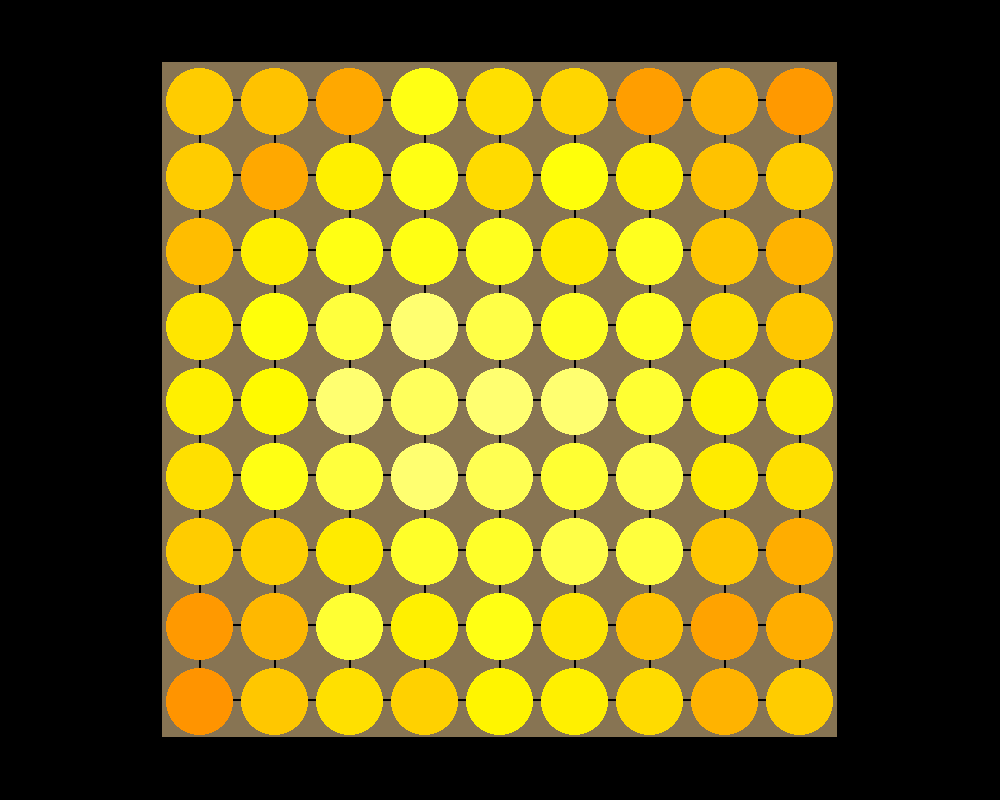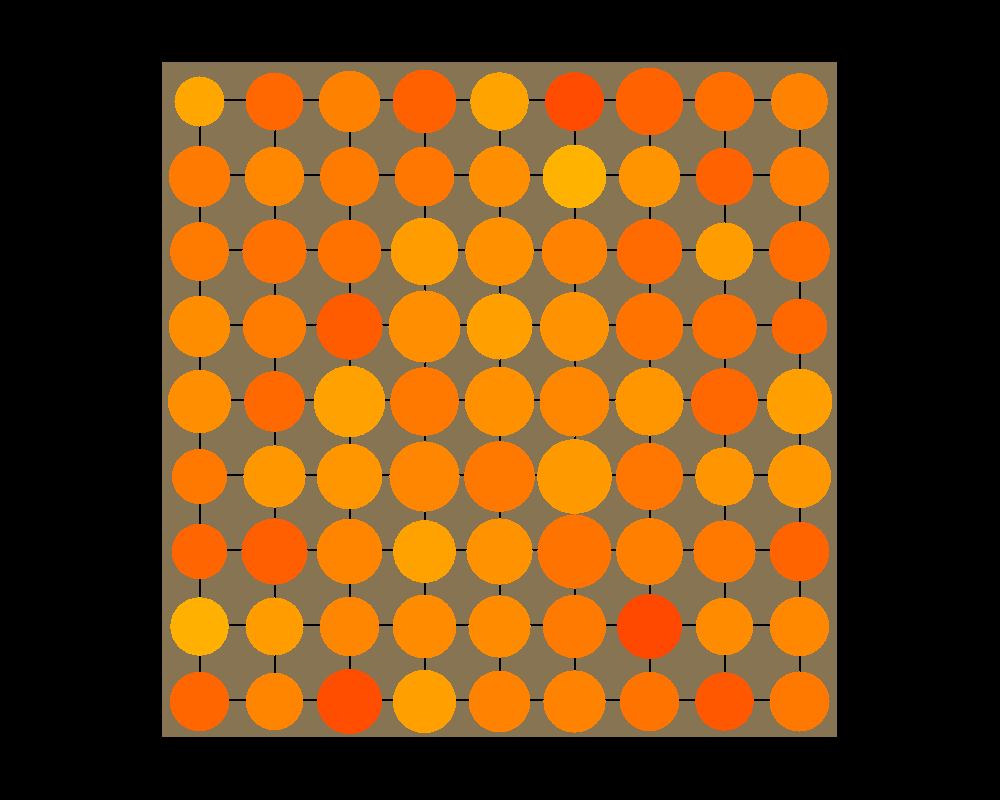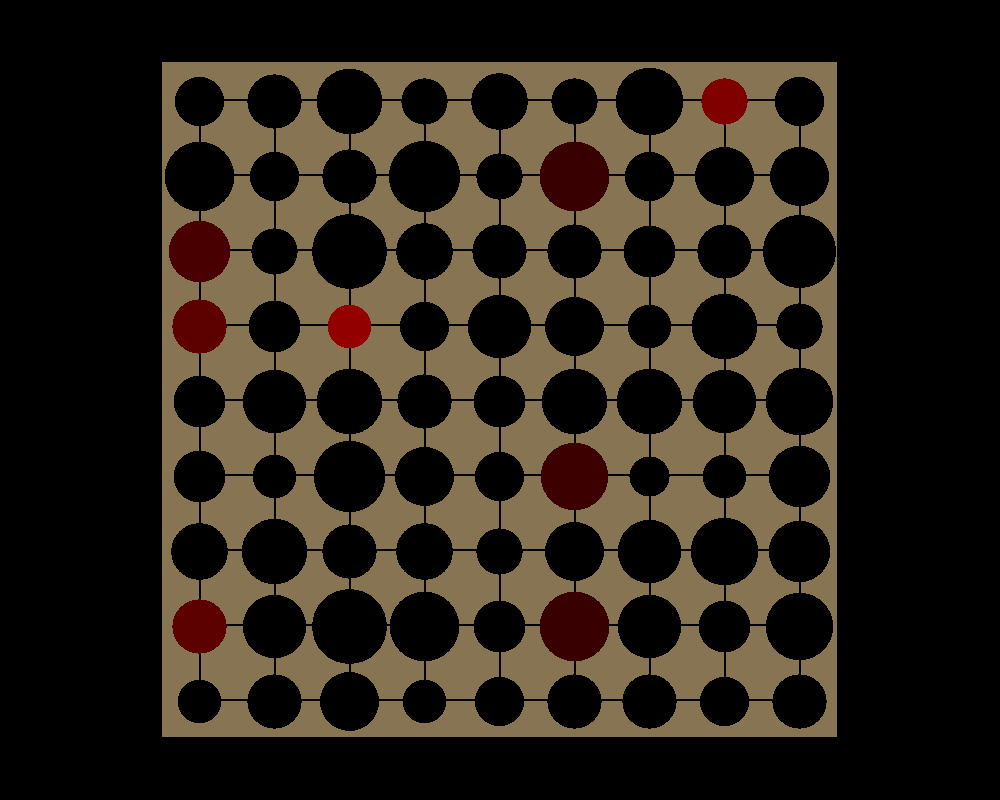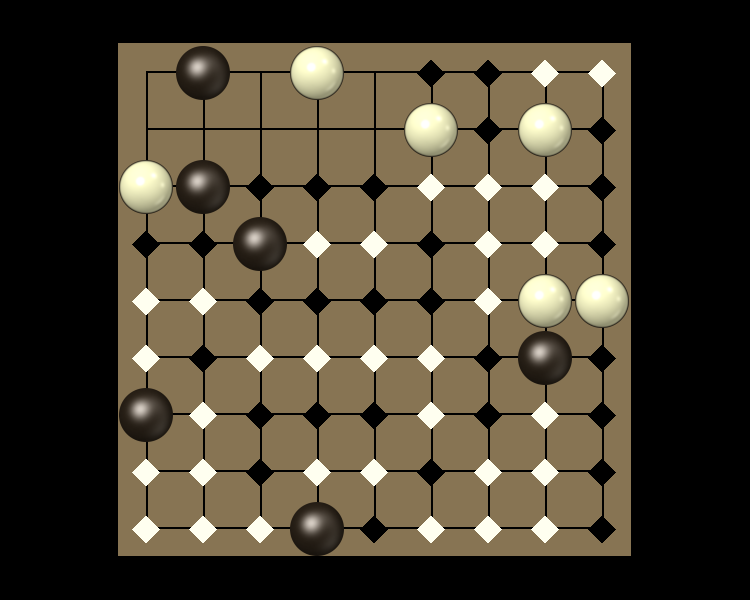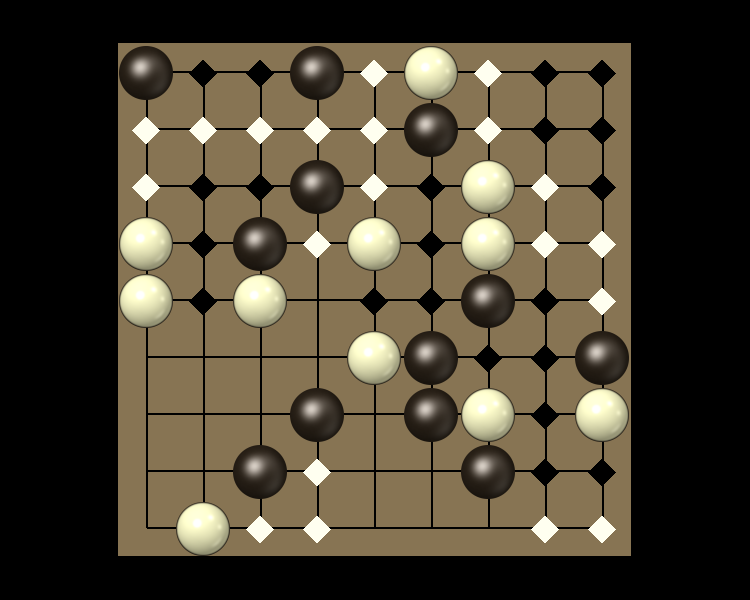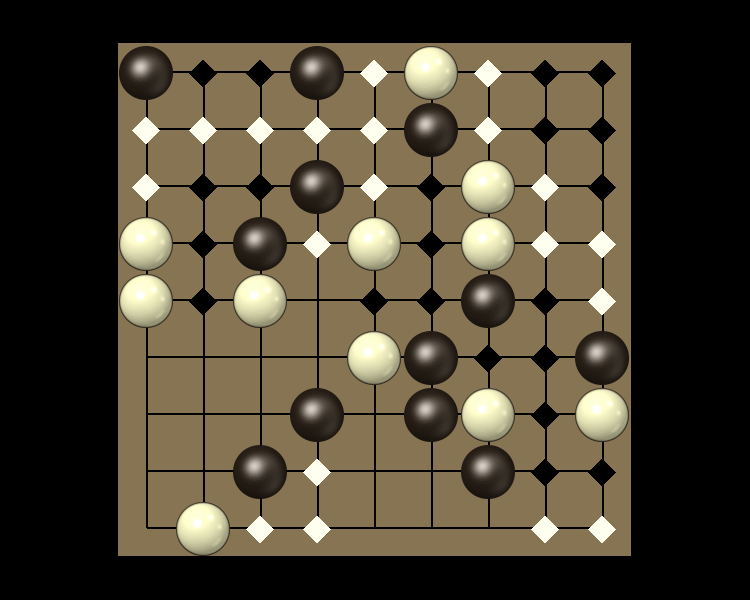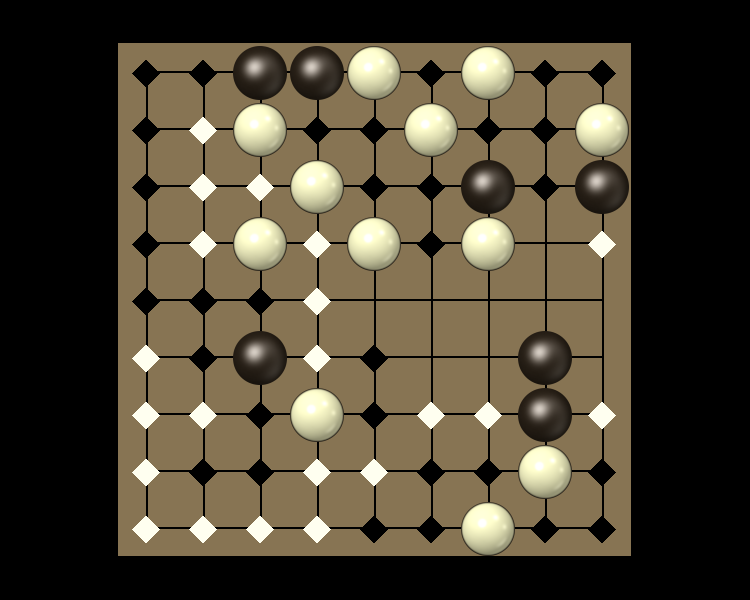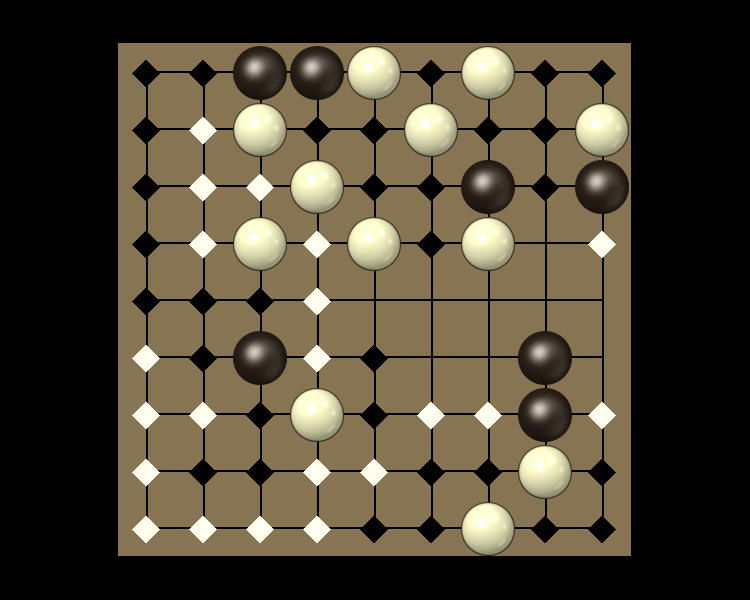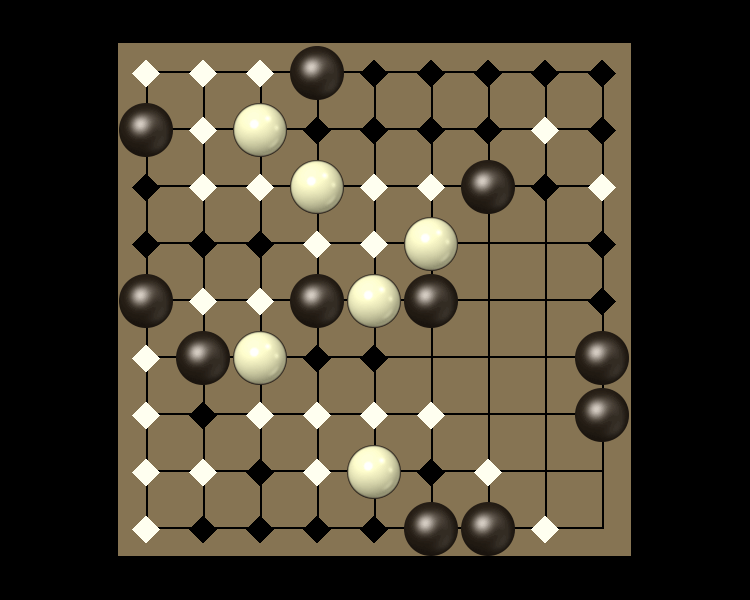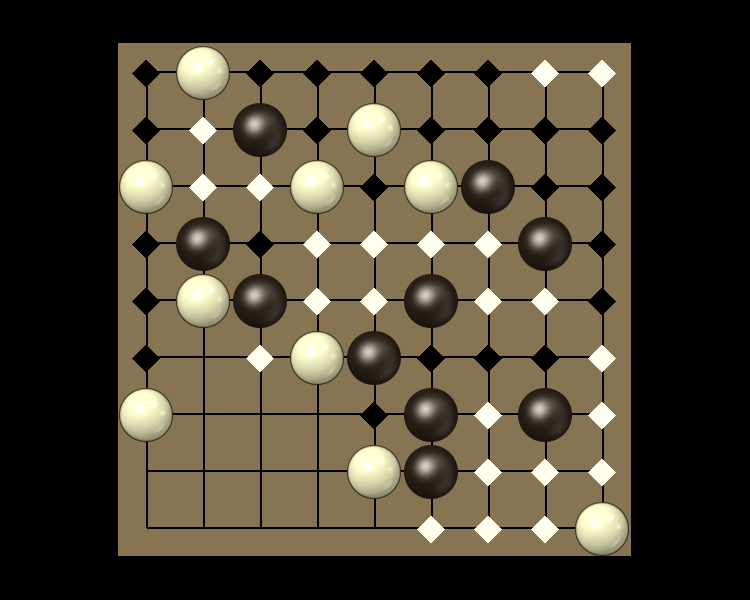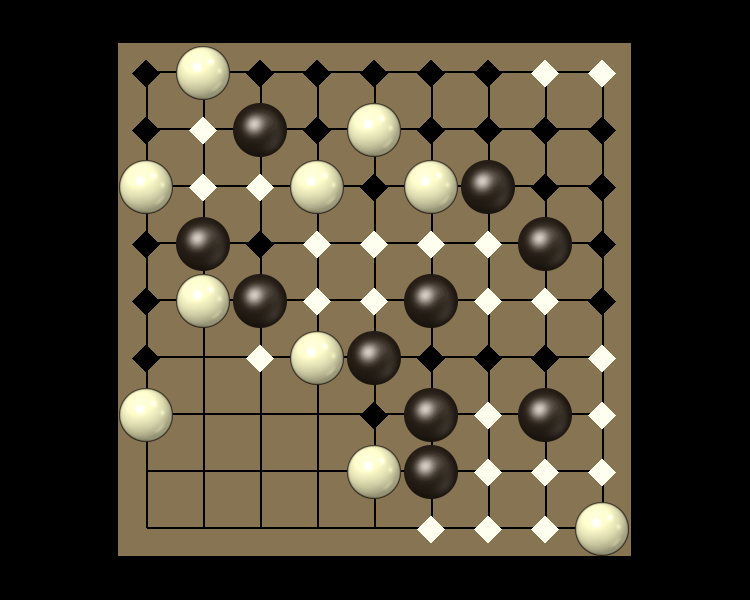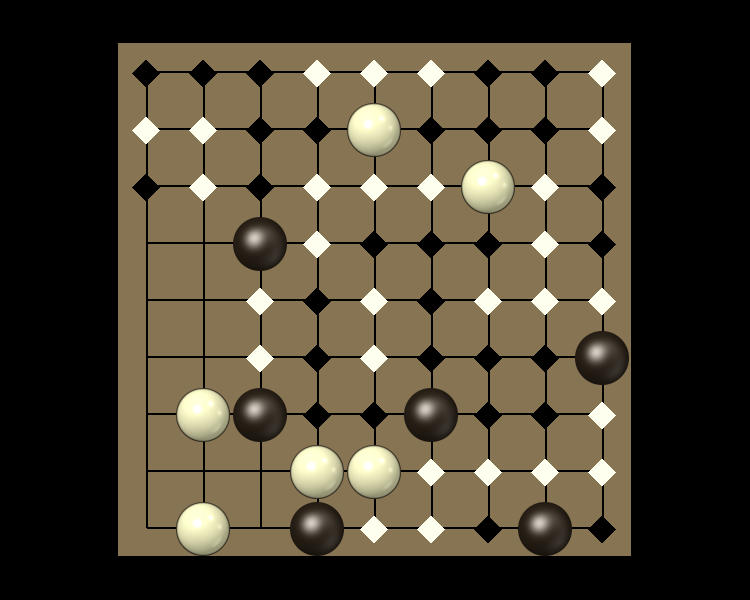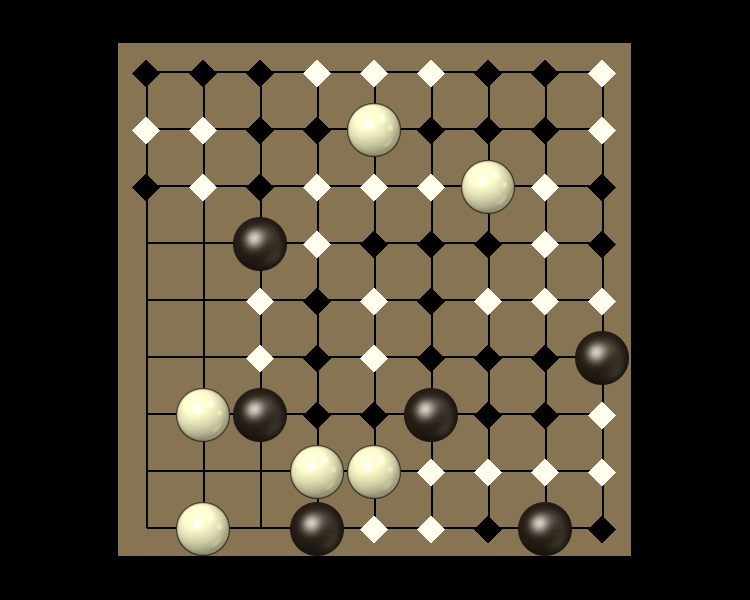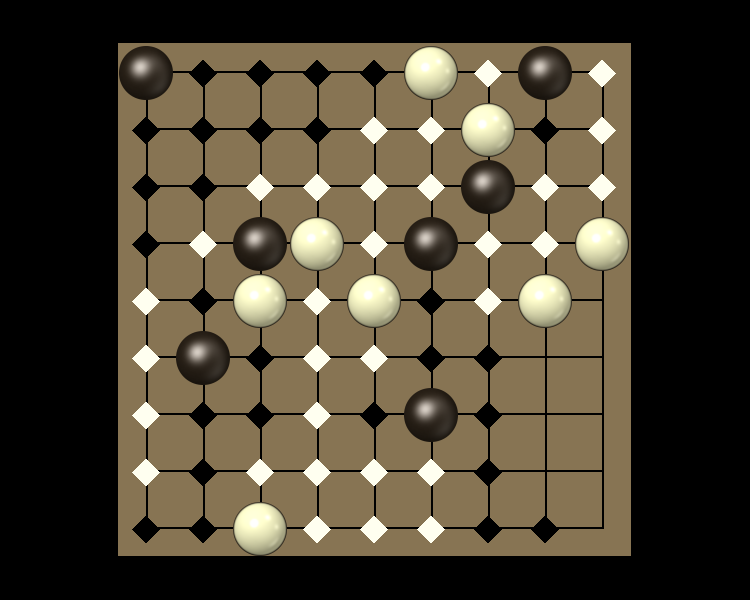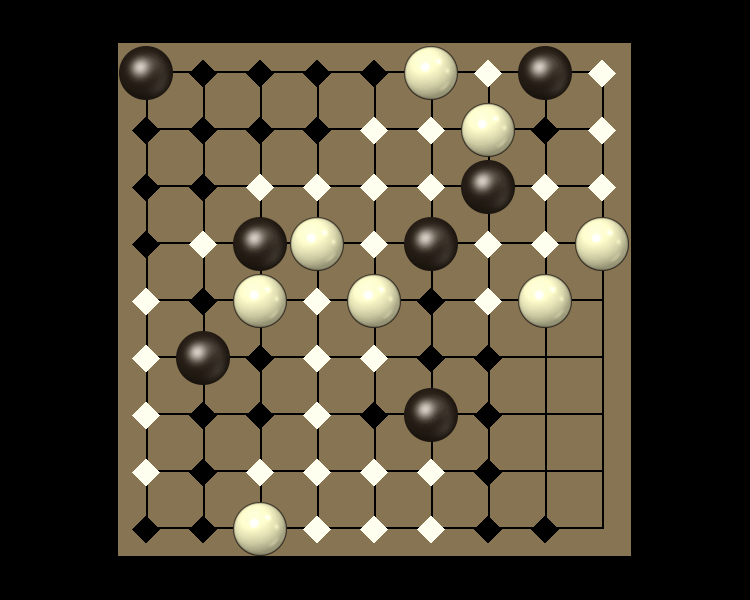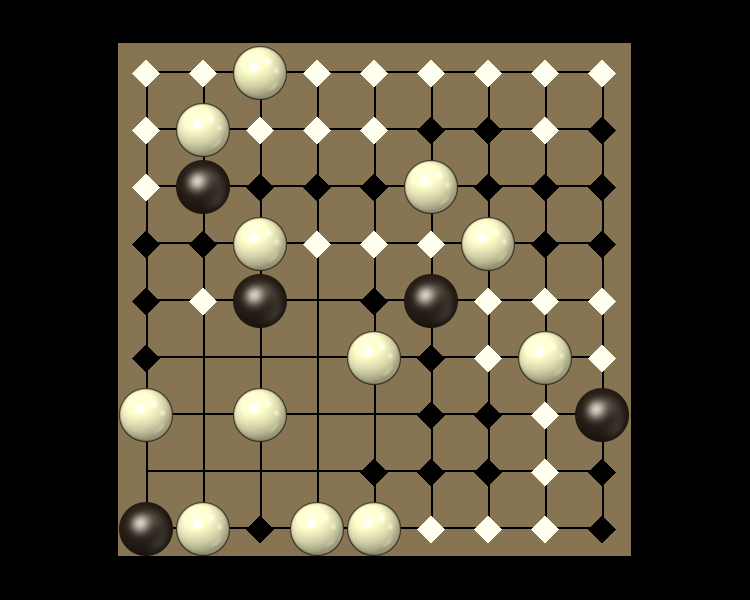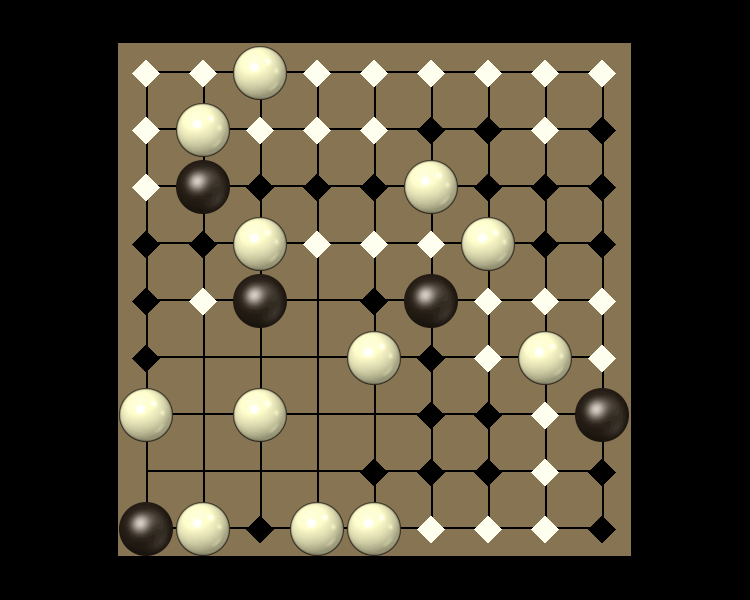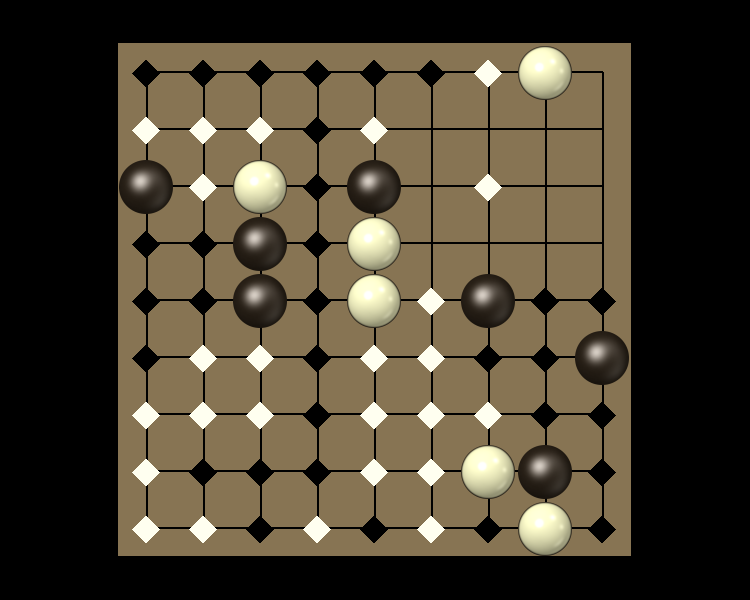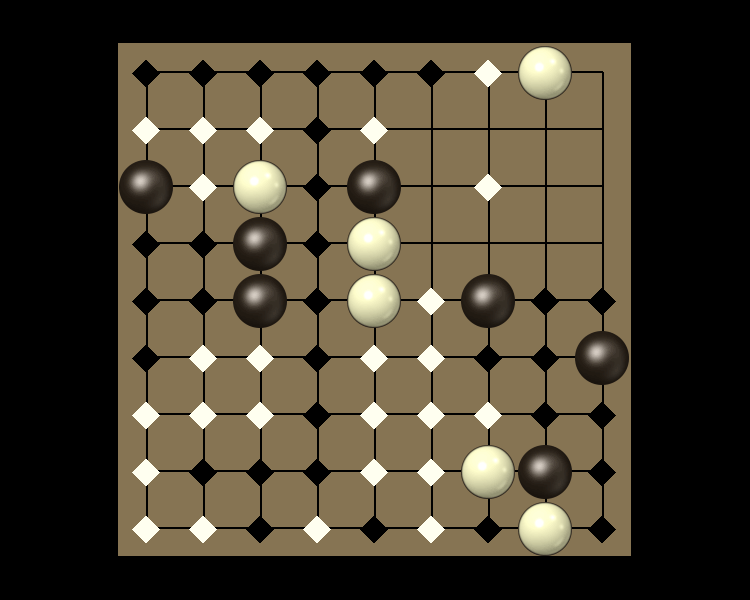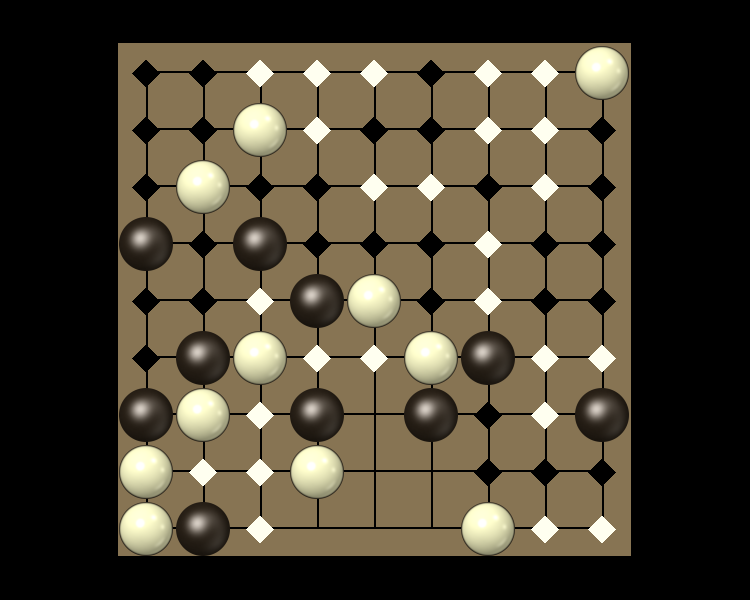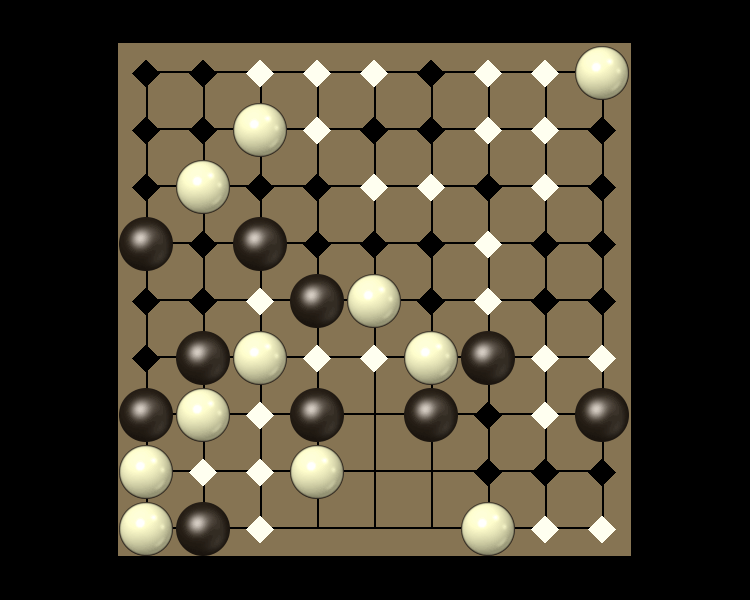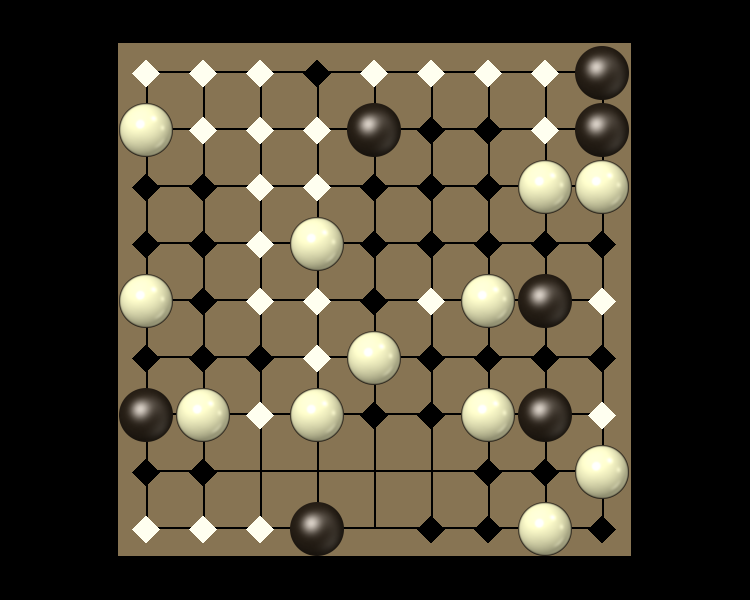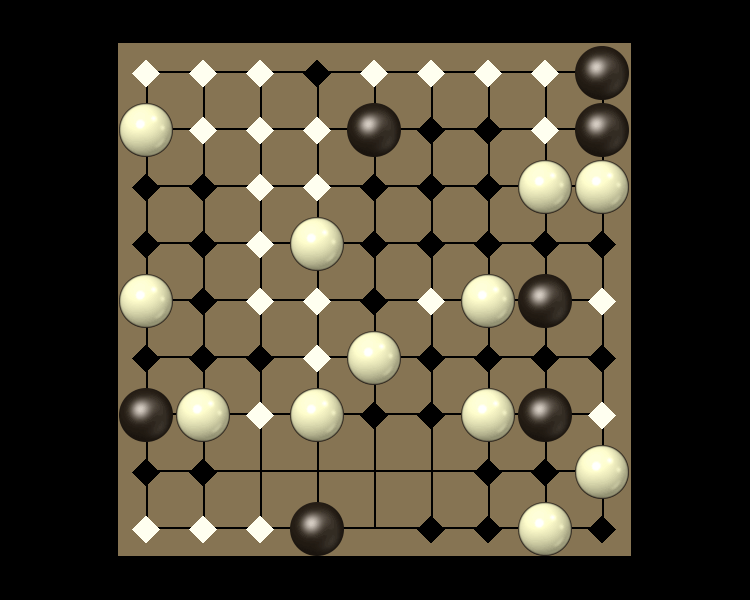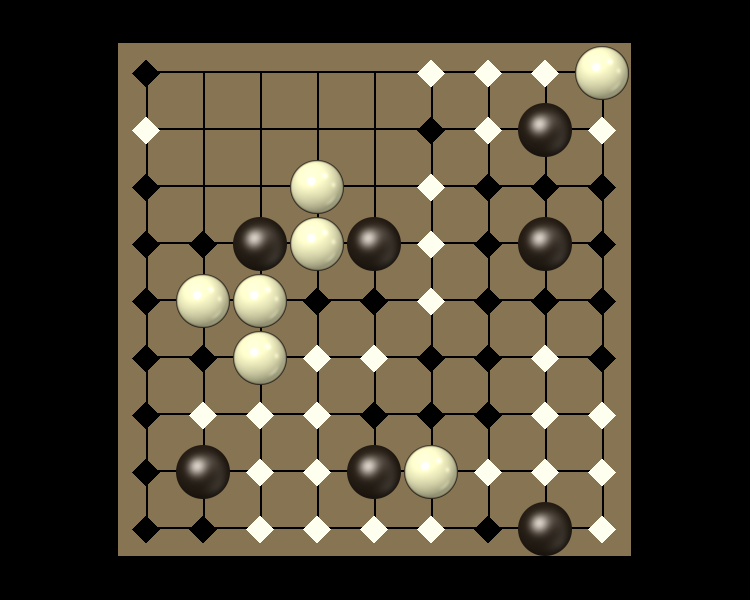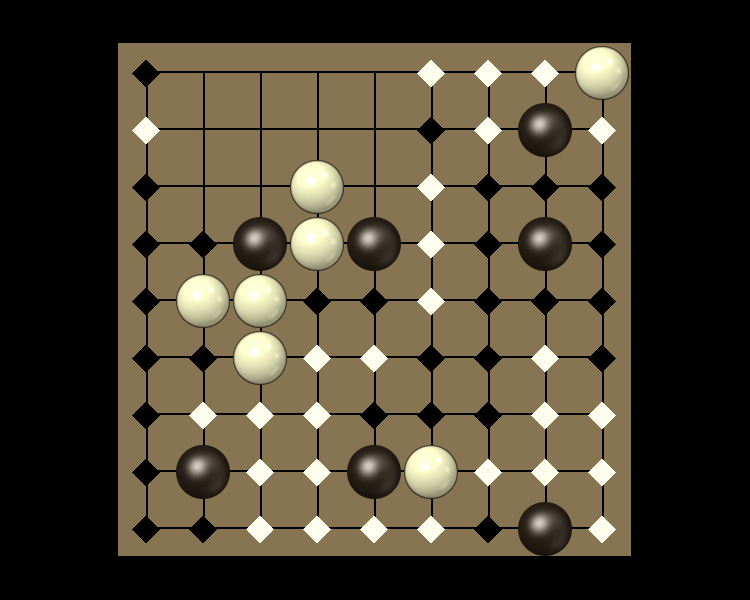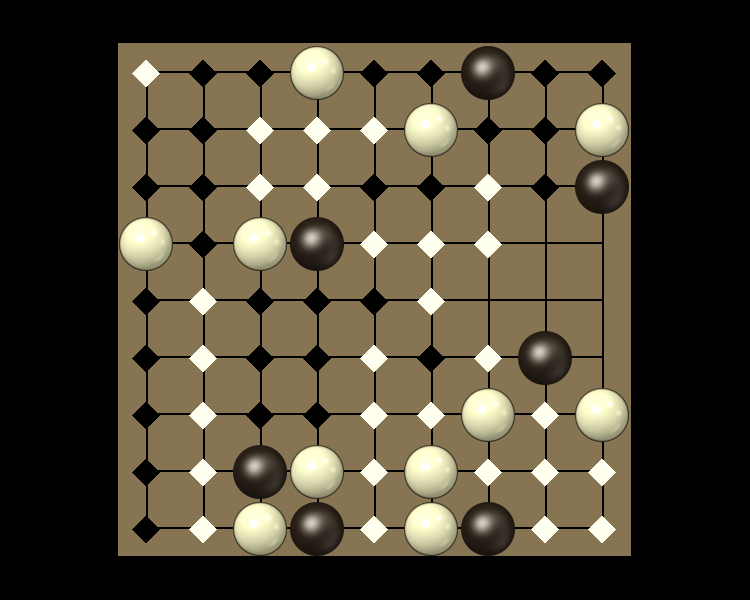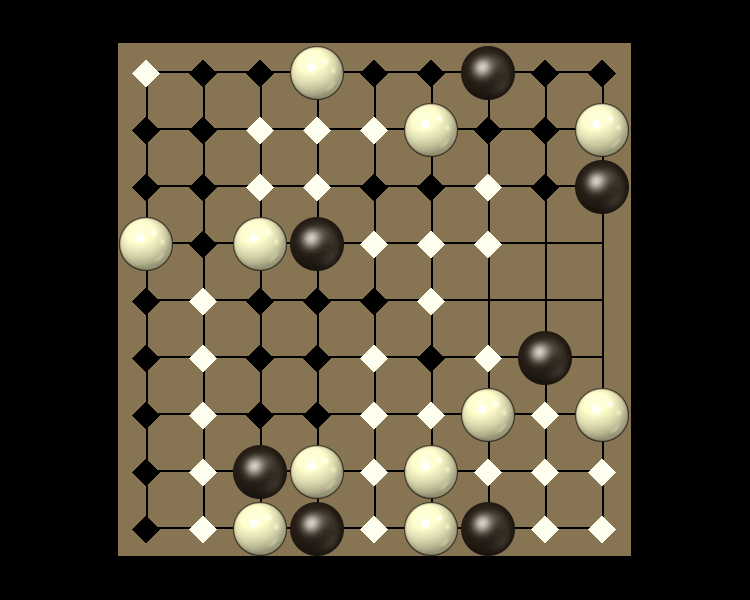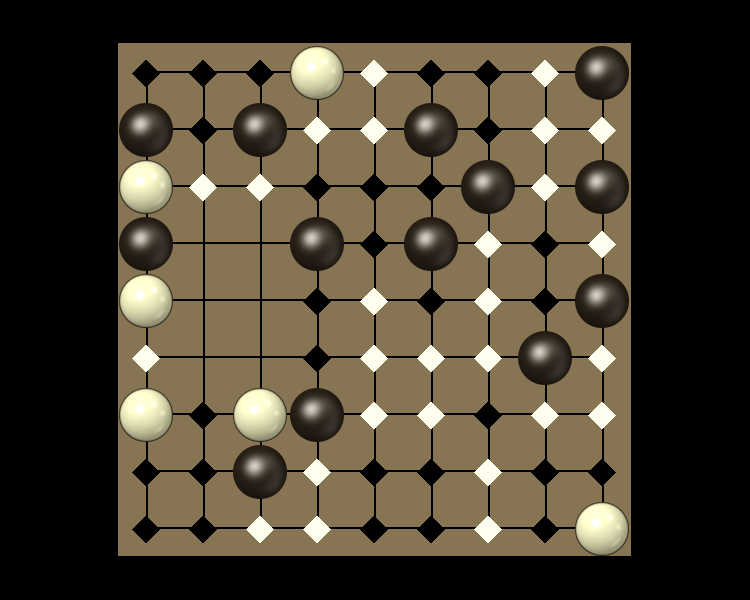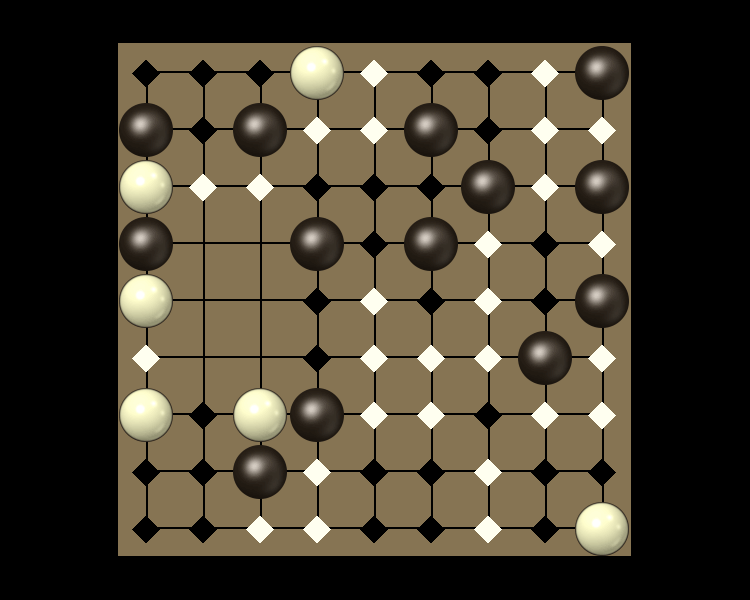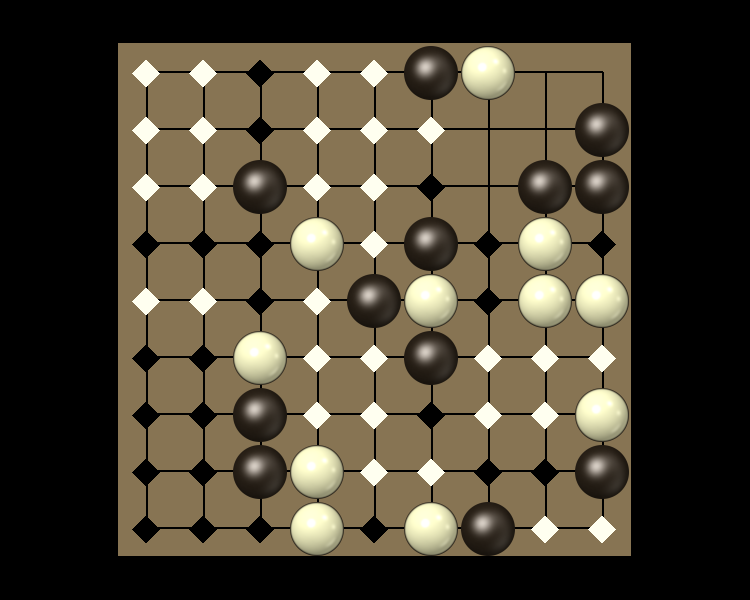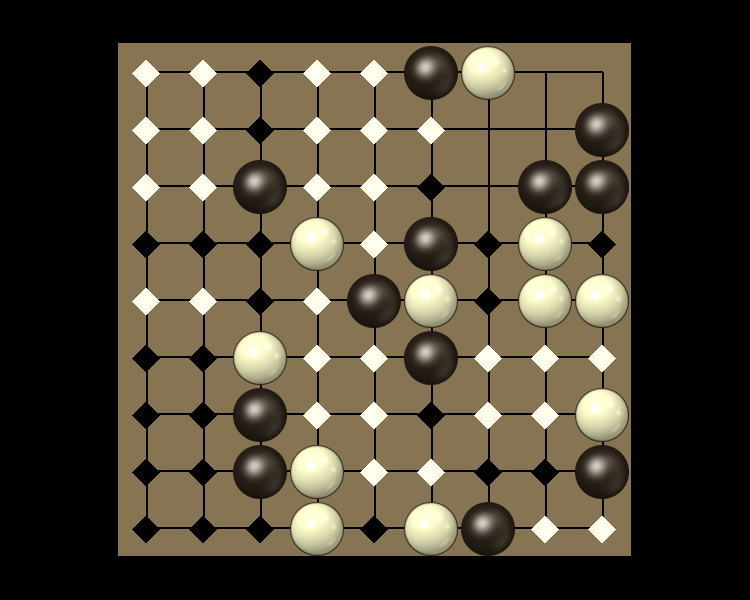Rules
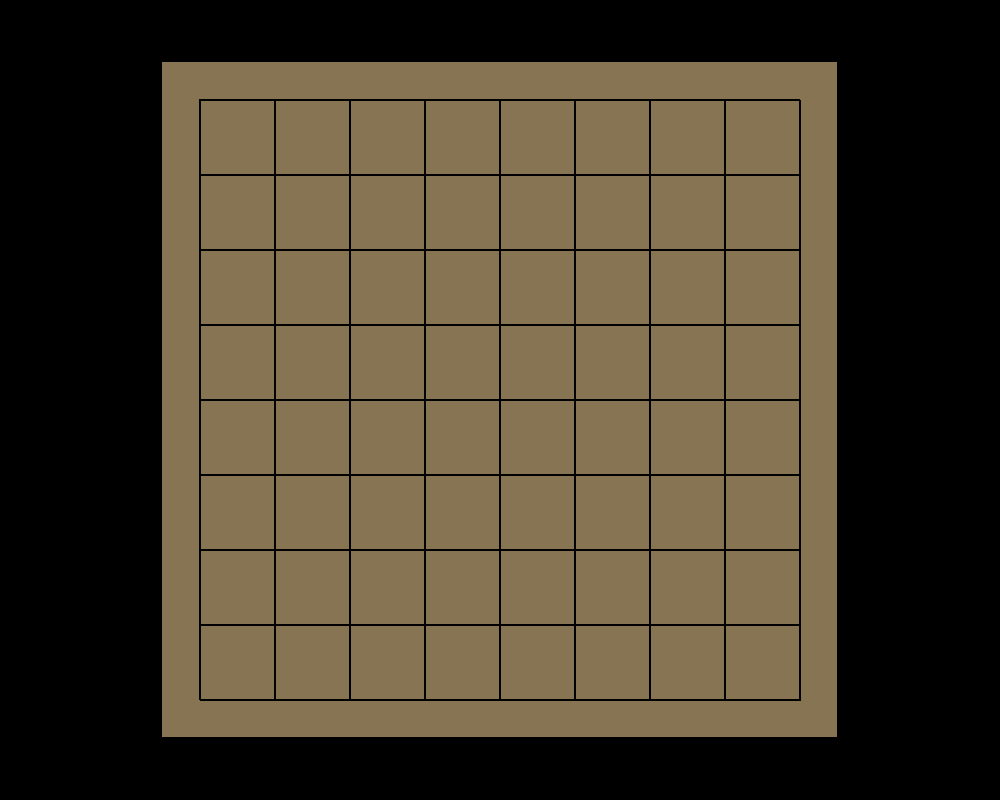
Representative game (in the sense of being of mean length). Wherever you see the 'representative game' referred to in later sections, this is it!
Introduction
Implo is a finite territory game for two players: Black and White. It is played on the intersections (points) of an initially empty 7x7 square board. Each player must have access to a sufficient number of stones and markers of their own color.
Definitions
In these rules, "adjacent" always means "orthogonally adjacent".
A group is a piece along with all other pieces one could reach from it through a series of steps between identical adjacent pieces. Thus, all pieces in a group are the same type (stone or marker) and color (black or white).
The size of a group is the number of pieces in it.
Likewise, a territory is an empty point along with all other points one could reach from it through a series of steps between adjacent empty points.
A patch is a territory including at most four points.
The owner of a patch is the player with the biggest group of stones adjacent to it. If there is no such group or the biggest such groups of both colors are the same size, the owner of the patch is the opponent of the player who placed the last stone on the board.
To resolve a patch is to place a marker of its owner's color on each of its points and to remove the biggest group of stones which is adjacent to the patch and owned by the same player as the patch. If several such groups are tied for biggest, the player who is resolving the patch removes, among those, one of their choosing. If there are no groups of stones adjacent to the patch, no group is removed. Note the player resolving the patch need not be the owner of the patch.
Play
Black plays first, then turns alternate. On your turn, perform these actions in order:
- Place a stone of your color on an empty point of the board.
- Resolve any single patch on the board.
- Repeat the previous step until no patches remain. Note the order of resolving matters, and resolving a patch may create new patches.
If, at the end of a player's turn, there are no empty points on the board, the game ends. The player with the higher score in the final position wins.
Your score is the biggest group size in which you have the greater number of groups of markers. If there is no such size, your score is zero. If both players are tied at zero points, whoever has more stones on the board wins. If this is also tied (only possible on even-sized boards), whoever made the last move loses.
Pie rule
The pie rule is used in order to make the game fair. This means White will have the option, on their first turn only, to swap sides with their opponent instead of making a regular move.

